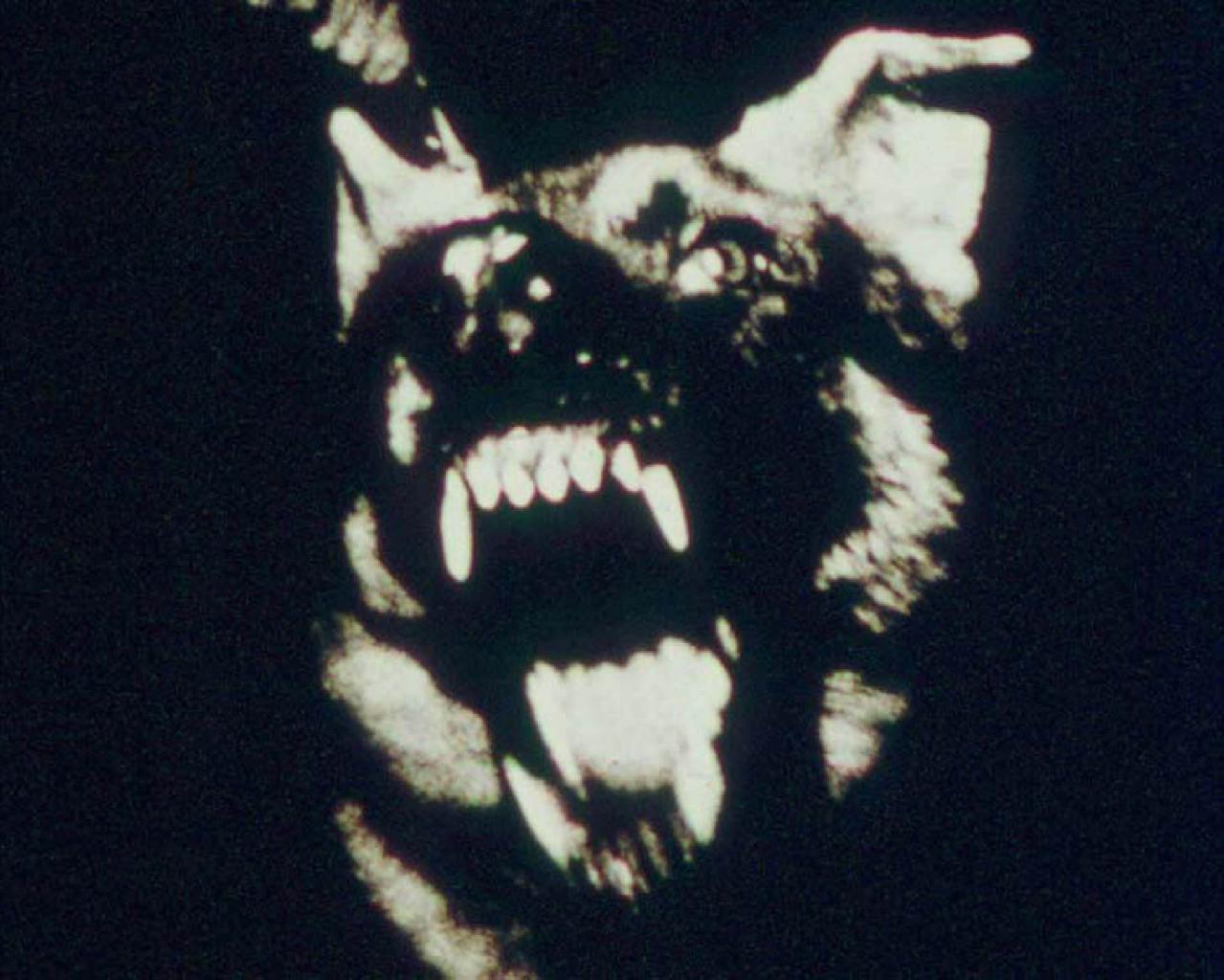
‘Born in 1967, Deborah Stratman is an American filmmaker and artist who participates in a form of experimental, and ethnographic, filmmaking. This article provides an introduction to her filmography, and the subjects and themes she explores through her films.
‘Stratman is a Chicago-based filmmaker who leaves town a lot. Her films blur the lines between experimental and documentary genres, and she frequently works in other media including photography, sound, drawing and architectural intervention. Her films, rather than telling stories, pose a series of problems – and through their at times ambiguous nature, allow for a complicated reading of the questions being asked. Many of her films point to the relationships between physical environments and the very human struggles for power, ownership, mastery and control that are played out on the land. Most recently, they have questioned elemental historical narratives about freedom, expansion, security, and the regulation of space.
‘Stratman received her MFA from the California Institute of the Arts (CalArts). During her time there, she studied under the experimental filmmaker, James Benning, whose work often explores landscapes, time, and duration, and who Stratman often sites as an influence. For just about the past three decades, Stratman’s multifarious body of work has not only included films but also sculpture, photography, drawing, and sound installations.
‘Most of the films Stratman has created extend from an intersection between the avant-garde and documentary. In particular, many of her films are concerned with the ways in which our physical environment is entangled with the notions of surveillance, privacy, and, control. She is particularly interested in utilising the duality of sound, as a mode of control and resistance, to explore the environments featured in her films. Further to this, Stratman strives to divine a non-linguistic epistemology through her film’s distinct sonic landscape, something she describes as ‘a kind of knowing that is just as intellectual but is not tied to words.
‘United primarily by an inquisitive approach that fuses the heart of a poet with the mind of a scientist, artist and filmmaker Deborah Stratman’s works engage a staggering range of concerns, geographies, and forms. The dominant impulse underlying her practice is a desire to reach an understanding of a subject, whether it is an astronomical phenomenon—the comets of . . . These Blazeing Starrs!, 2011, for example—or an ontological condition, such as freedom (O’er the Land, 2009). Some questions are, of course, unanswerable, and Stratman’s research rarely results in resolution. For the artist, understanding is always provisional, a benchmark at which new mysteries emerge and opportunities for poetics arise.’ — collaged
____
Stills
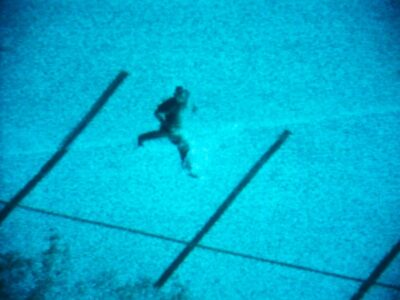


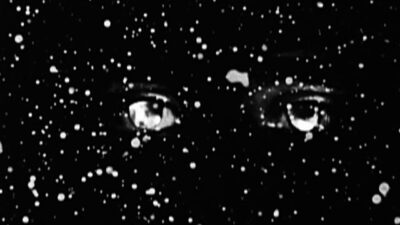
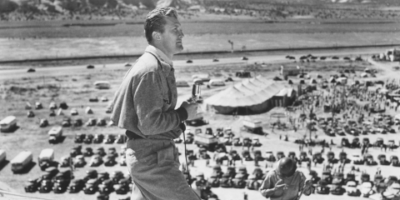
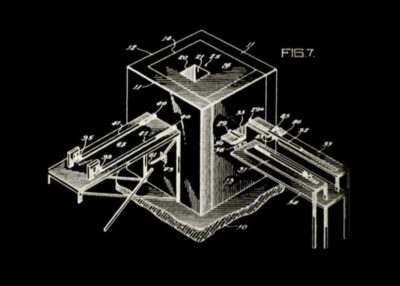
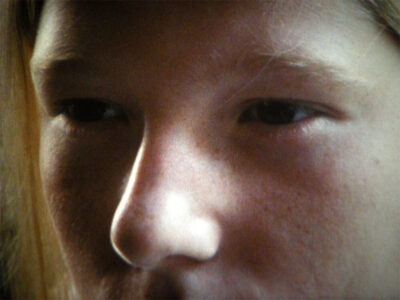

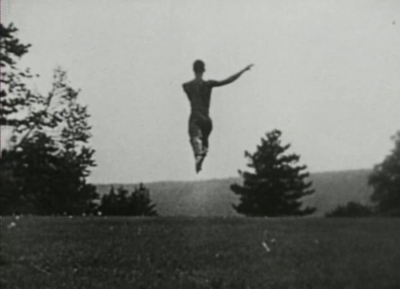
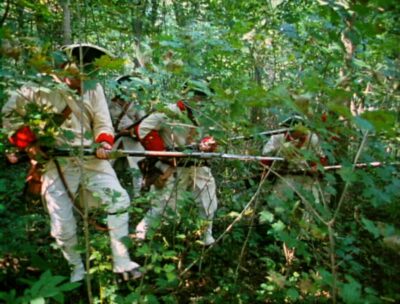
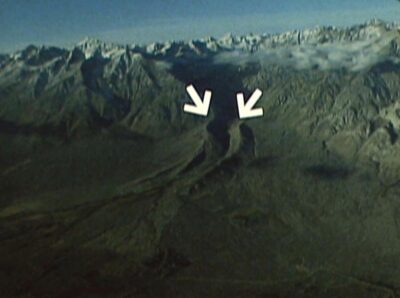
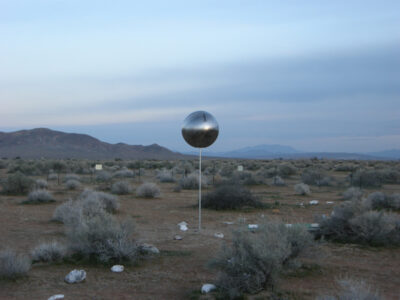

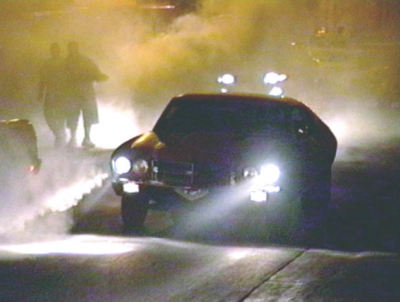
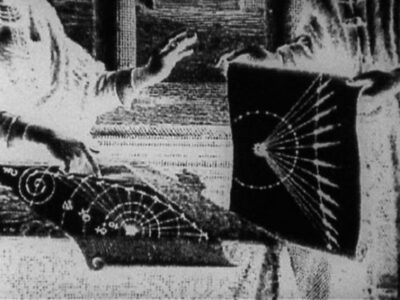
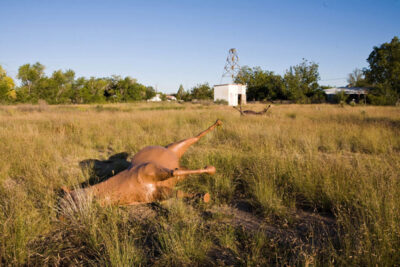

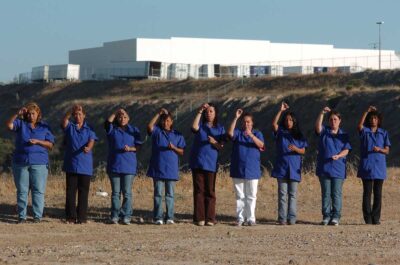
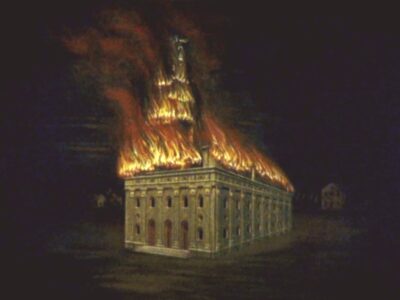
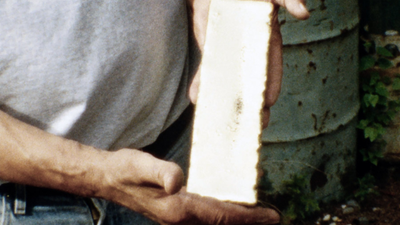












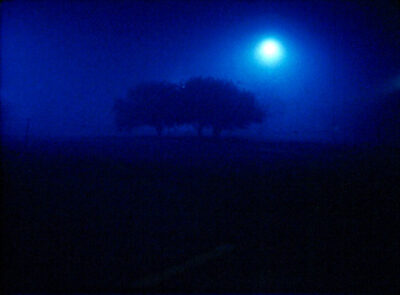


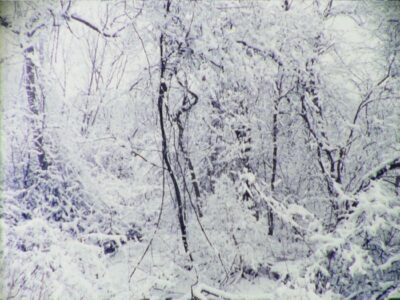
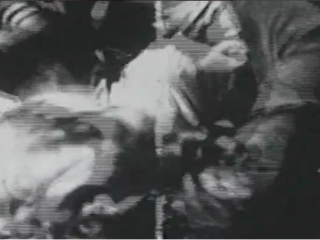
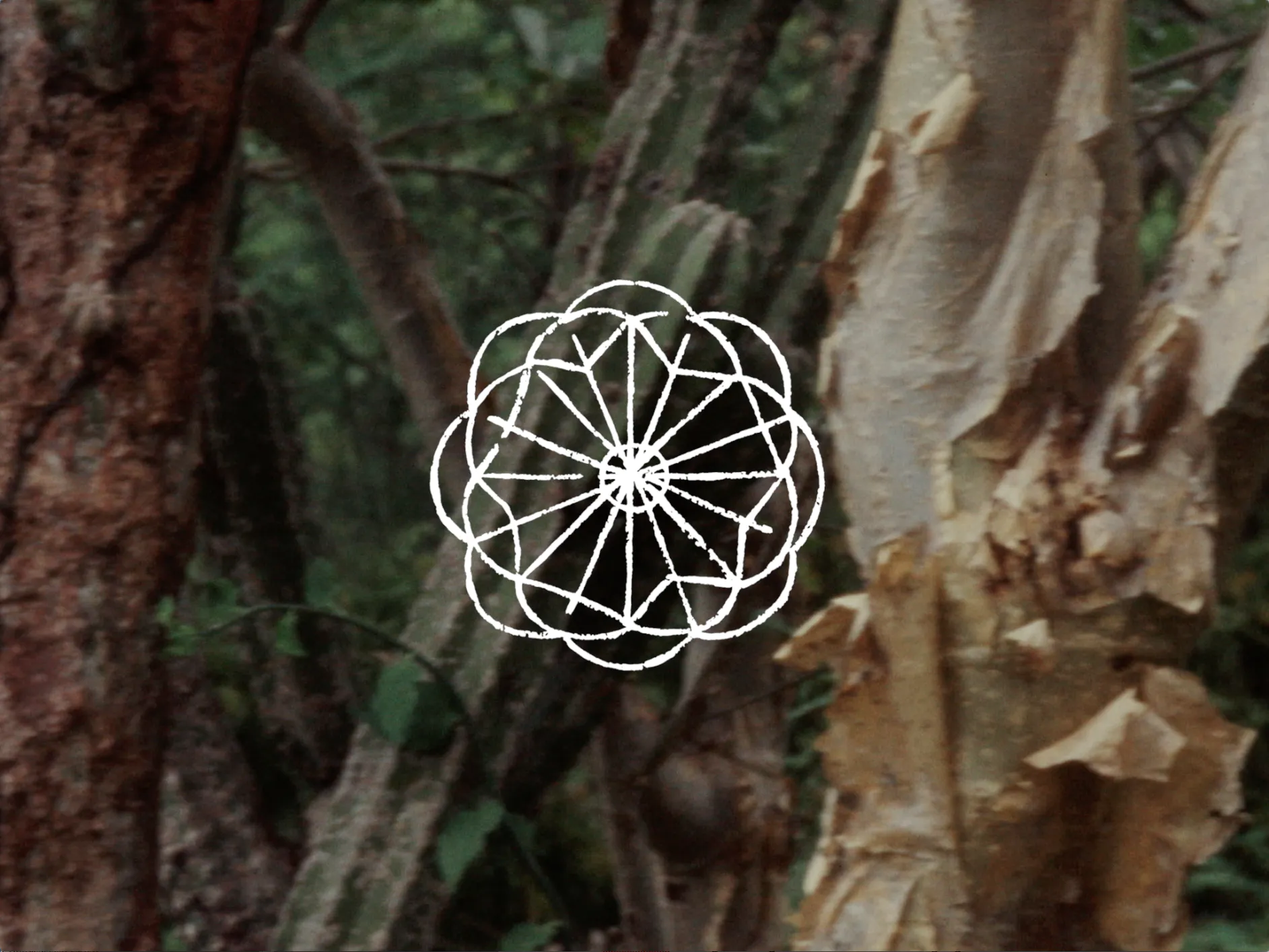
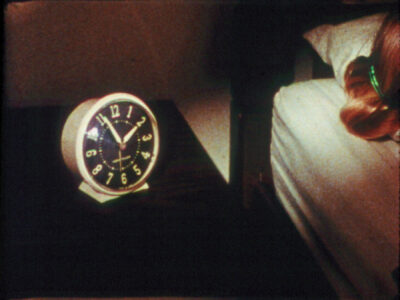
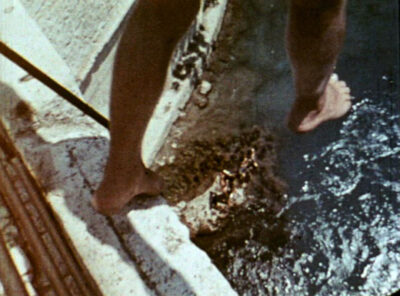

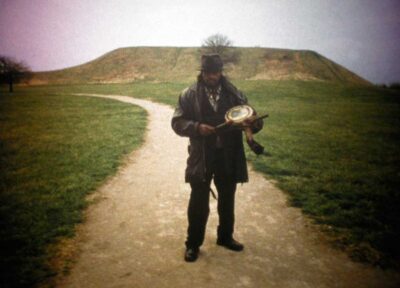

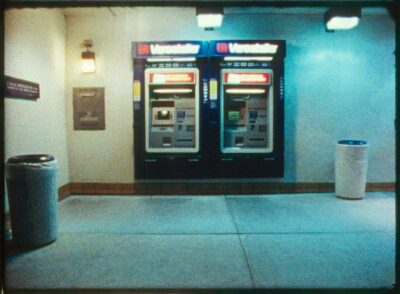
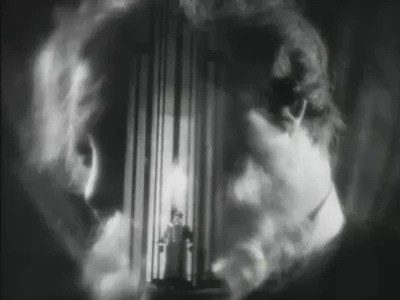
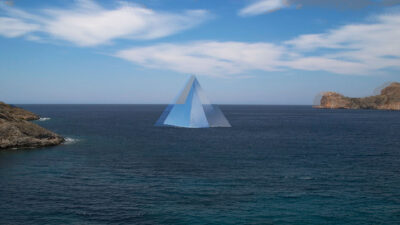
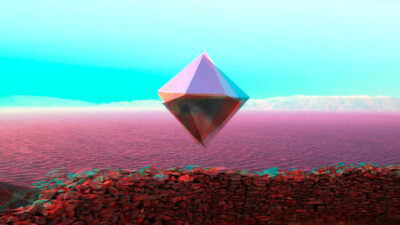
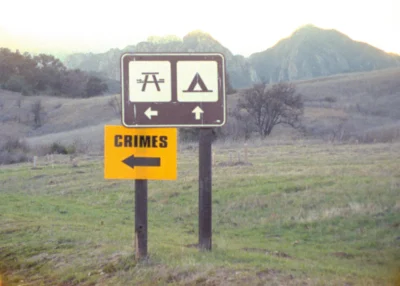
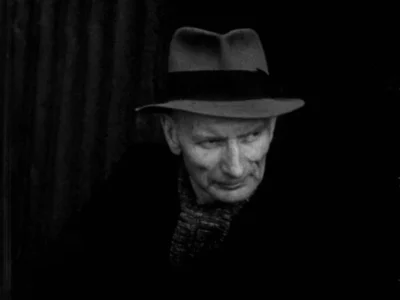
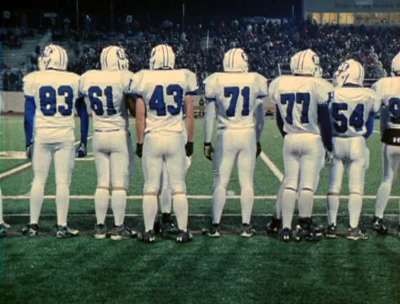
____
Further
Deborah Stratman Site
DS @ Lightcone
DS @ Video Data Bank
DS @ IMDb
Filmmaker Profile: Deborah Stratman
On the Various Nature of Things: Deborah Stratman
Travel to Places “Heavy With History” in Deborah Stratman’s Films
DS @ This Long Century
DS @ Instagram
What Is Felt Cannot Be Forgotten: an interview with Deborah Stratman
A staggering new film tells the story of faith in America
VOLUMES AND PRESSURES: DEBORAH STRATMAN with Aily Nash
Short Take: The Illinois Parables
MAXIMUM MINIMALISM. A conversation with Deborah Stratman
Deborah Stratman by Pamela Cohn
Interview with Deborah Stratman By Julie Perini
On Deborah Stratman
DEBORAH STRATMAN, THE EXPERIMENTAL DOCUMENTARIAN
____
Extras
Filmmaker Profile: Deborah Stratman
Talk: Deborah Stratman
Masterclass: Deborah Stratman
Final Draft: Deborah Stratman on Film
______
Interview
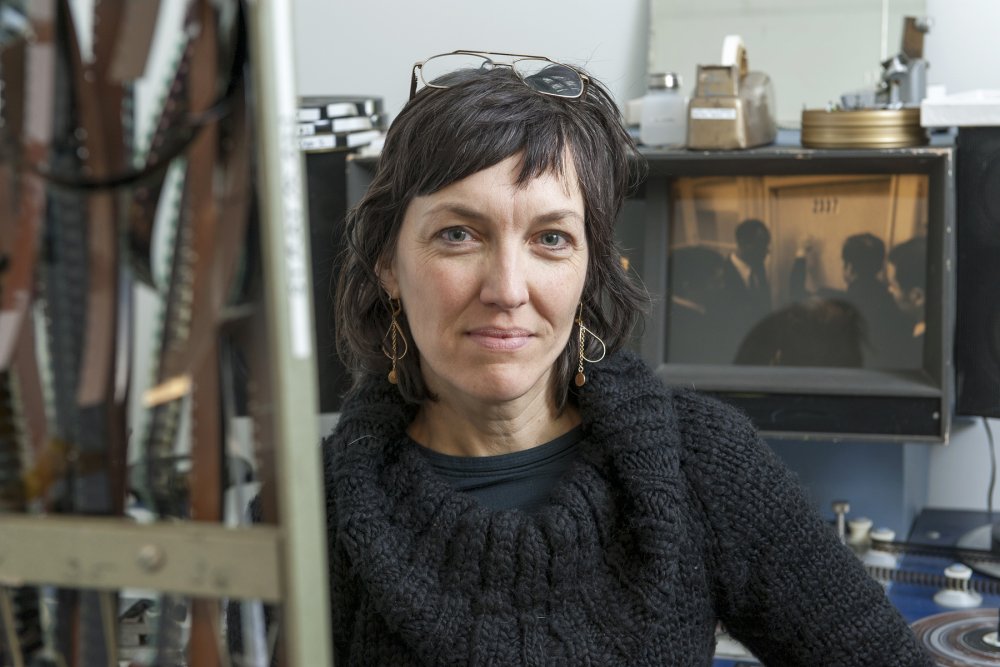
E: The sonic dimension of your work suggests a rigorous modeling of the relationships between recording-event and the representation of place, experience, concept. Examples range from the matter-of-fact, ‘indexical’ presentation of the sounds of the shooting location in The Illinois Parables (2016), to the use of something like continuity sound in the barroom scene in Optimism (2018), to sounds that are almost in direct confrontation with the content of the images, as in On the Various Nature of Things (1995). Some of your films, like Hacked Circuit (2014), even directly comment on the construction and manipulation of “real” sound through highly manipulated sound. In Order to Not Be Here (2002) integrates Kevin Drumm’s electronic pulsations into the sound mix, to harrowing and immersive effect. How would you describe your approach to recording and representing place and experience through sound? Is it specific to each film, or are you doing something more programmatic? Does this approach have political, ethical or personal implications (insofar as these can be considered separate)?
DS: Sound makes space. Is space. Is nothing without space. Sound is expressed through and changed by space. I love making space with sound which is just making forms with time. It’s the ultimate temporal sculpture medium. When you ask about approach, that’s how I’d describe my primary relationship.
But there’s lots of other relationships that define the ways I like to work with sound that have to do with, say, memory – the way rhythm makes things indelible – tone, humor, augury/foreboding, transposition, rupture, setting background or defining a protagonist – to me melody can be a formidable protagonist. Though in terms of inclination, I’m more a ground than a figure person.
Political-ethical-personal, absolutely the aural has repercussions here. But so does the image. So does everything really. I don’t think I approach ethics more pointedly or successfully in one or the other.
E: Loving this equation of making sound-space (sound=space) and making time-form as a way to think cinema-making. It feels axiomatic. The relationship of memory to this is interesting as well – thinking cinematic devices as translating feeling-tone and rhythmic nuances of memory (maybe we could provisionally define memory as the palpable absence of a particular listening?) into time-forms.
Of course, some have made analogies between elements of your work and that of Straub and Huillet, but the incongruities are maybe more interesting here than the comradeship. In any given film of theirs, it seems that sound-space is always doing a kind of double duty: acting as index of the immediate conditions of its recording in a given place at a given time (no dubbing or continuity) and as index of some essentially inaccessible social-historical past (which is always a function of the former duty: locations chosen, conflicts between images, sounds, etc.). Of course they pushed this very far: you can find Straub moralizing against the use of cinematic imagination and “formless form,” shots essentially become blocks of documentary-time, absolute fidelity is emphasized.
Your work also seems to be mobilized against historical amnesia, and totally conscious of place and time of recording, but far more willing to play with interpretation, manipulation, recreation, feeling of memory. Are your time- forms built in fidelity to some primary act of listening (or remembering), or are they building something else entirely?
DS: That parenthetical definition of memory makes me think of Merleau-Ponty’s description of a ghost as a perception made by only one sense. Apropos when we’re talking alongside the great phantom, cinema.
I’m on board to think about memory as the absence of a particular listening. Or maybe any listening….? The radical thing about listening, like Salomé Voegelin says, is that it must share time and space with the object or event under consideration. It’s a philosophical project that demands involved participation. There’s no detachment. It’s not the ‘over there’ that vision gives us, but an in-the-midst. Which is what makes listening such a good locus for the socio- political. On the other hand, sound is an intriguingly obstinate and malleable arena through which to take on history, because if we’re listening to something, it’s unfurling. It’s never a static artefact.
Straub-Huillet are very important for me, but I’m happy you mention the incongruities. What idiom and dialect convey is immeasurable; a sub-surface mix of cadence, inheritance, geography, epoch… I think there’s a connection here to what I aim towards in constructing time-forms. An idiomatic erratic product of the dance I perform with my material. Most of the time, the only things my time-forms are built in fidelity to is themselves. Sometimes not even that. Though if they’re well-made, there’s an allegiance to the unfurling present and to the remembered/recorded past. Or to forecast. History and augury are equally productive companions to the moment.
Often my work grows out of a primary act of noticing. Might be a passage of music, an illustration, a story told… But I’m not interested in fidelity to the thing as I came across it, or as I thought it. Like our buddy Walt Benjamin says, nothing’s poorer than a truth expressed as it was thought. It’s best if my ideas get snagged or interrupted by the world. I’m happy when subjects get in my way and become interlocutors. That’s why I’m drawn to modes like documentary, where chance has a seat at the table.
E: I’d like to zoom in for a moment on the triple relationship of what you call augury/forecast, history/past and the moment/present in your time-forms, and specifically this figure of augury as opposed to history. History – and correct me if I am misinterpreting! – seems to be analogized with past time, which may or may not be “remembered” via the perpetual “moment” of the screen, the recording, etc. There also seems to be a necessary relationship here between contingency and the representation of history, or even a parallel between chance and the realm of history generally. But what exactly is this third element, forecast or augury, in your time-forms? What are its implications? By augury, do you mean eschatology, soothsaying, editorializing, utopian projection, a gesture ‘off-screen’? To bring this closer to Voeglin’s discourse as you mention it, is augury a kind of listening for?
DS: It’s all those things and more. Forecasting is sort of like remembering, except you’re walking backwards into it, and there aren’t any leavings available to sift through. When I use the word augury, I’m talking about projecting. It’s anticipatory and conjectural. It could be tied to signs of narrative or melodic convention. It could be speculation based on cadence, or a product of pressures built though editing, setting, gesture, framing, what’s beyond the frame, etc. Without augury there’s no suspense, or surprise, or rhythm. There’s a channelizing of attention, or yes – a listening for. I believe in listening. Radical listening. Attentiveness is powerful. Observation, in its potential to cede space and agency, is powerful. We should question the habitual. Question bricks. Question the height of the curb. Which station our radio gets left tuned to. The route we favor. Notice who speaks. Who gets the last word.
E: All fascinating. In terms of method, do you often shoot and then edit footage years later?
DS: Sometimes I work very quick. Like sketching. But at least half of the time I shoot and either don’t return to material until years later, or am working on it sort of continuously, but over a very long time.
E: What’s the utility of this?
DS: Alienation. The footage feels less mine if it ages. The shots get detached from the experience that generated the desire to shoot them in the first place. Some things sit because I never had plans for them. I just shoot what moves me then add it to the shelf – something I can tap later when the right idea comes along. Other times I’m clear on what I should do, but the thing I’m trying to make is obstinate. And then other times, I aim for as little thinking as possible—hold the camera like the net.
___________
18 of Deborah Stratman’s 42 films
___________
Waking (1994)
‘A video in two parts about two states (being asleep and being awake) and the absurdity, or even impossibility, of bridging between them. The camera becomes a microscope examining light as if it were a state of mind.’ — vdb

___________
From Hetty to Nancy (1997)
‘The stoic beauty the Icelandic landscape forms a backdrop for a series of witty and caustic letters written at the turn of the century by a woman named Hetty as she treks with her companion Masie, four school girls and their school marm. The film juxtaposes Hetty’s ironic cataloguing of the petty social interactions of her companions as they endure discomfort and boredom with historic accounts of catastrophes that reveal the Icelandic people subject to the awesome forces of nature.’ — dafilms
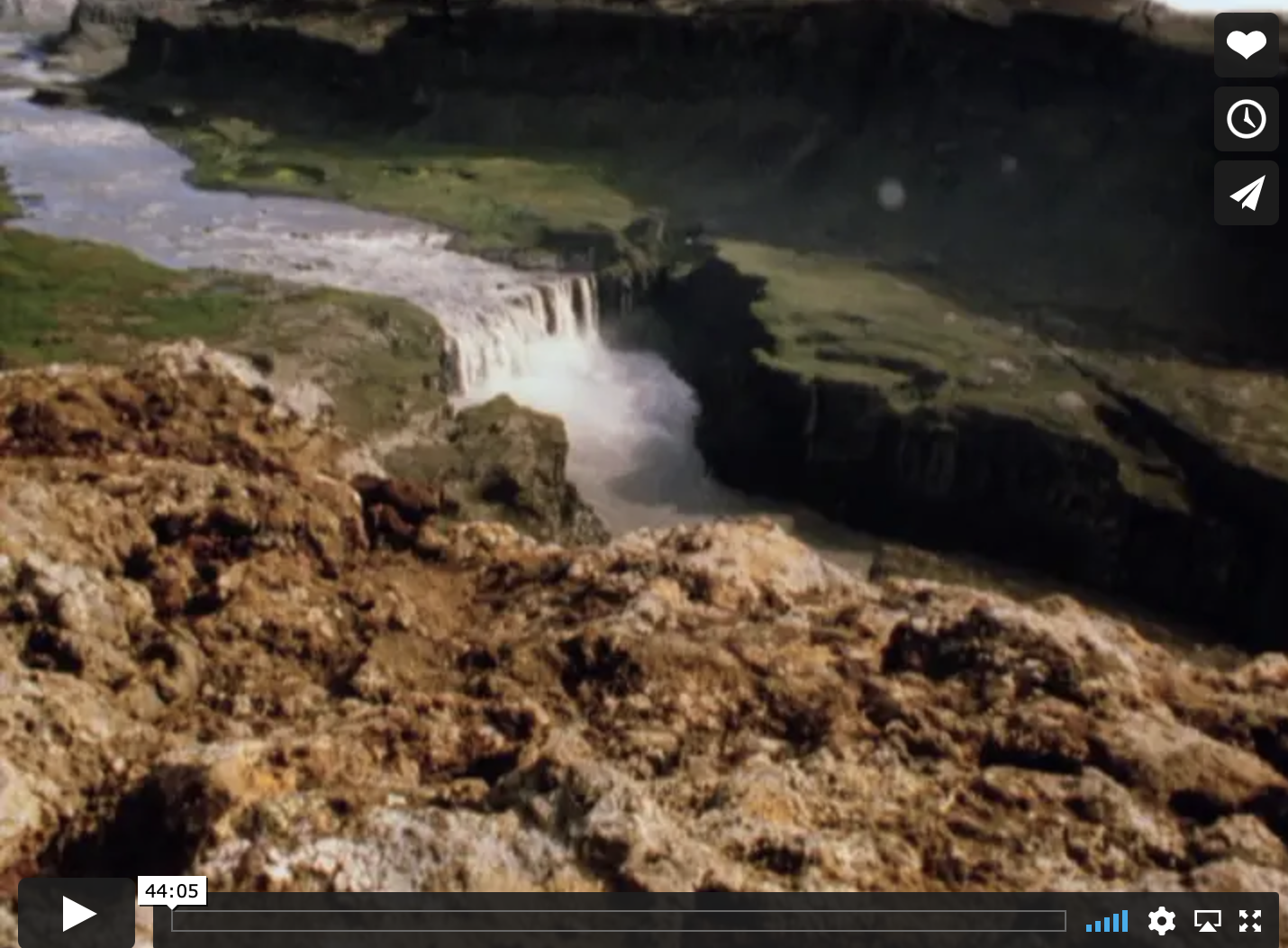
___________
The BLVD (1999)
‘With a painter’s eye and a storyteller’s love of the great yarn, Stratman gives us a portrait of a sub-culture inside Chicago’s Black community that really puts us in that place at that time. …Stratman brings her own personality to the work and interaction with the filmmaker becomes an important part of her telling of the tale. Stratman’s love of detail and of her subjects, not to mention their respect for her in return, give BLVD an immediacy that transcends any technology.’ — Mark Rance, Film Forum
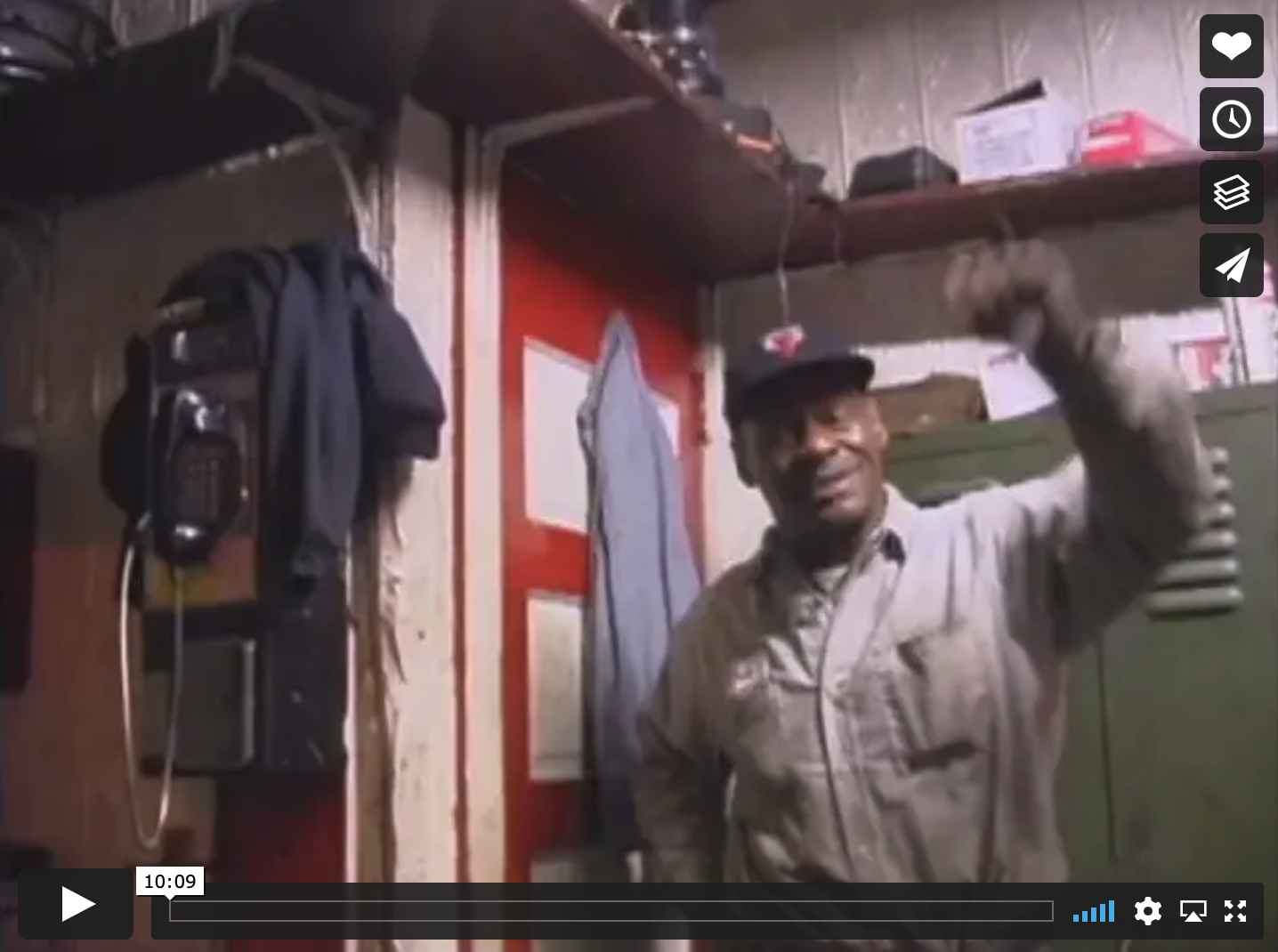
___________
Untied (2001)
‘A small portrait of the volatility of intimacy, and of breaking free from abusive cycles. Made in response to a year of collapsing relationships and violent accidents that left Stratman broken, dislocated, and stuck in her apartment.’ — vdb
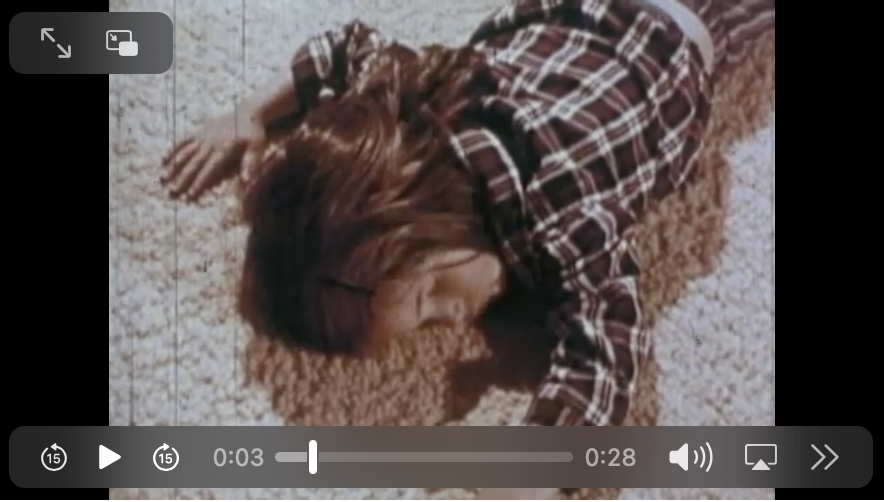
_____________
In Order Not To Be Here (2002)
‘An uncompromising look at the ways privacy, safety, convenience and surveillance determine our environment. Shot entirely at night, the film confronts the hermetic nature of white-collar communities, dissecting the fear behind contemporary suburban design. By examining evacuated suburban and corporate landscapes, the film reveals a peculiarly 21st century hollowness… an emptiness born of our collective faith in safety and technology. This is a new genre of horror movie, attempting suburban locations as states of mind.’ — Tenk
the entirety
_____________
Energy Country (2003)
‘The frenzied detritus of trading floors, smart weaponry and the religious right are woven through the petrochemical landscapes of Southeast Texas. This short video harangue questions land use policy as it serves the oil industry, patriotism as it absolves foreign aggression, and fundamentalism as it calcifies thinking.’ — vdb
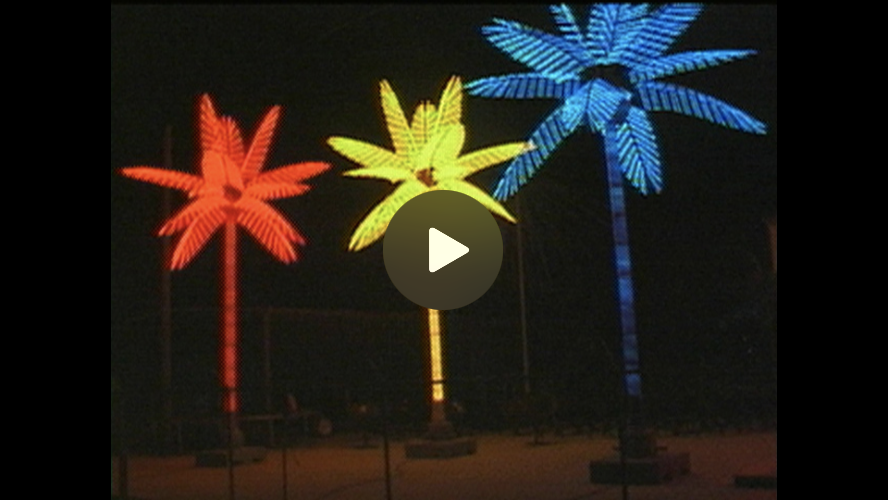
____________
Kings of the Sky (2004)
‘Deborah Stratman, who specializes in experimental documentaries, spent four months with tightrope walker Adil Hoxur – cited in the Guinness Book of World Records and the latest descendant of a family of tightrope performers over many centuries – as he and his troupe toured Chinese Turkestan and performed nightly in small villages. Among his biggest fans are fellow Uyghurs, a Turkic Muslim people seeking religious and political autonomy. Stratman emphasizes the everyday over the exotic, a consistently fresh and personal way of relating to the material; she trusts viewers to make many of the right connections but never comes across as esoteric. Her sense of rhythm in this digital video, particularly evident in the way she edits and lingers over certain kinds of movement, is especially impressive.’ — Jonathan Rosenbaum
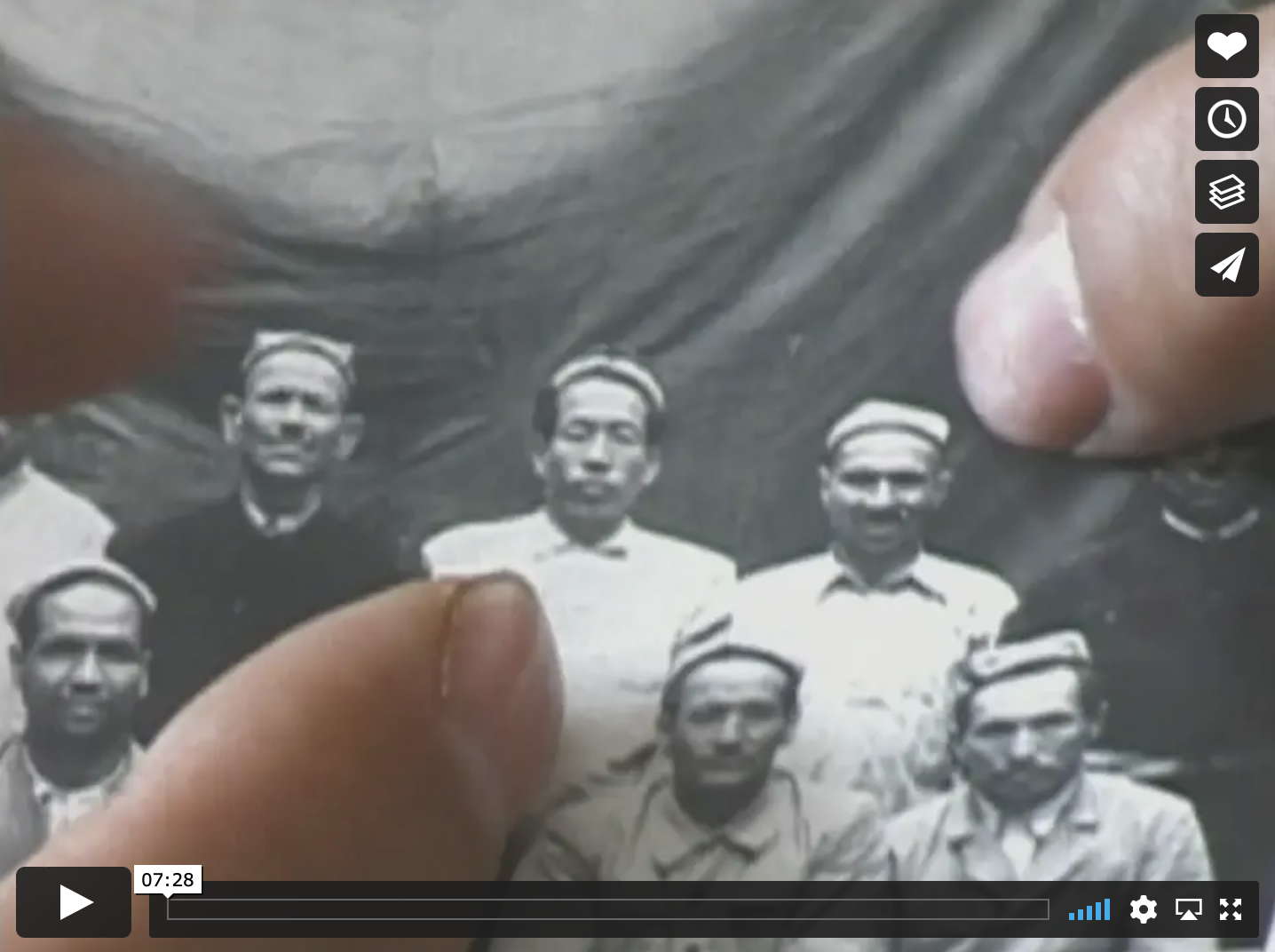
_____________
It Will Die Out In The Mind (2006)
‘This film by Deborah Stratman is a short meditation on the possibility of spiritual existence and the paranormal in our information age. Texts are lifted from Andrei Tarkovsky’s film ‘Stalker’ in which the Stalker’s daughter redeems his otherwise doomed spiritual journey. She offers him something more expansive and less explicable than logic or technology as the conceptual pillar of the human spirit.’ — MoCA
the entirety
______________
O’er the Land (2008)
‘An experimental and haunting collection of vignettes, Deborah Stratman’s O’er the Land weaves several picturesque and arresting strands into an evocative essay on freedom as defined by The American Way. At once contemplative and jarring, the film quietly ricochets from one emblem of patriotism and of the American experience to the next: football, recreational vehicles, Civil War re-enactments, and war stories, to name a few. A recurring motif in the film is the story of Colonel William Rankin, a Marine pilot who in 1959 ejected from his F8-U fighter jet and parachuted into a thunderstorm 48,000 feet above Virginia. Incredibly, Col. Rankin remained aloft for nearly an hour, tossed by air pockets and electrical fields, before crashing to the ground and, miraculously, surviving. One might say O’er the Land keeps the viewer aloft for a turbulent and rapturous hour as well.’ — TM
the entirety
_____________
Kuyenda n’kubvina (walking is dancing) (2010)
‘Kuyenda N’kubvina looks at how thought and culture propagate in the slender nation of Malawi. Weaving our way through video halls, book stores, dance floors and radio stations, in cities and small villages, we meet Malawians who traffic in ideas, reflecting the rhythms of Malawian contemporary life. The video was instigated by the filmmaker’s relative ignorance about the people and culture of southeast Africa, and accompanies her as she seeks out individuals and infrastructures that channel and articulate Malawian identity.’ — vdb
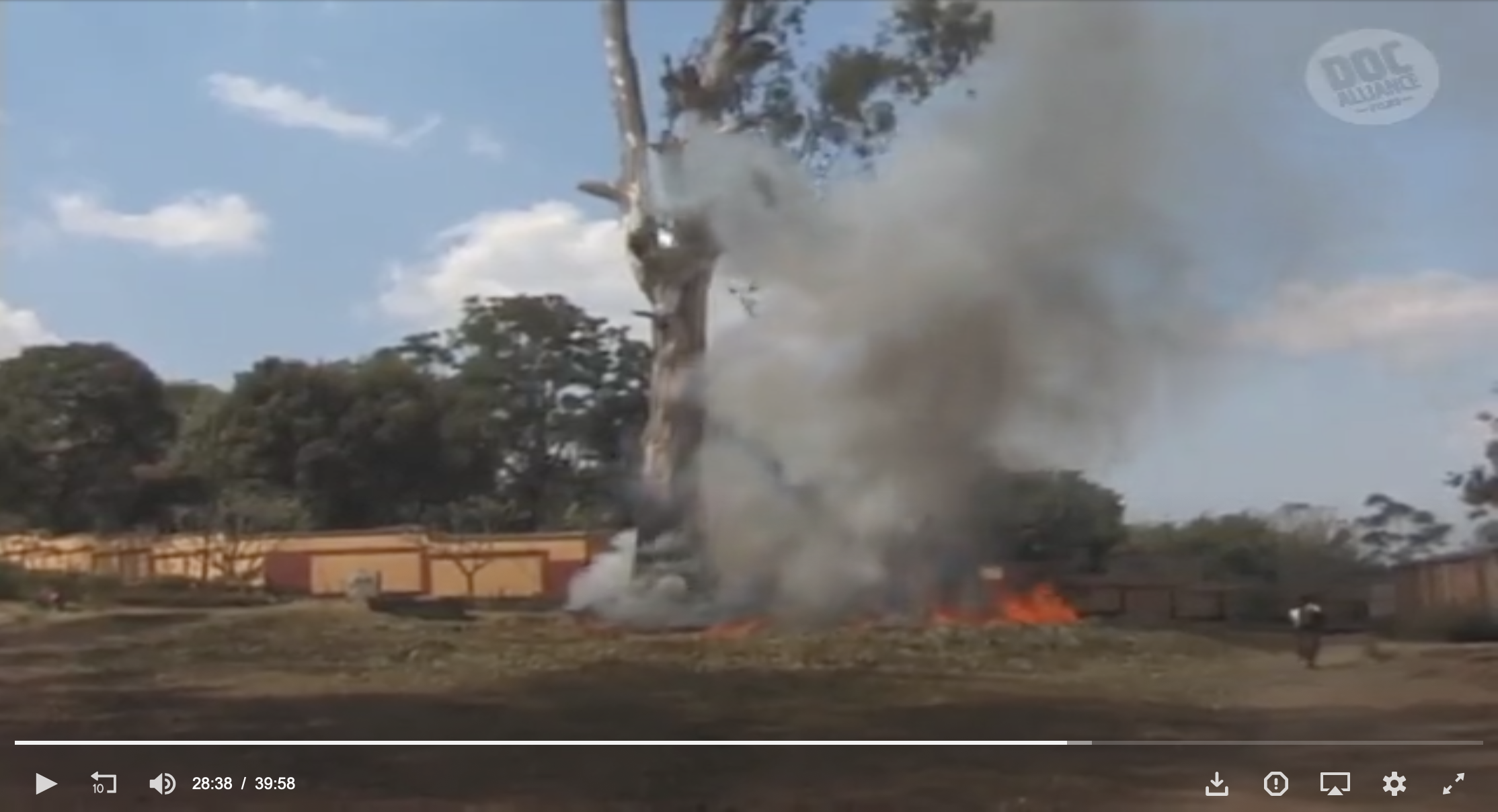
_____________
…These Blazeing Starrs! (2010)
‘Since comets have been recorded, they’ve augured catastrophe, messiahs, upheaval and end times. A short film about these meteoric ice-cored fireballs and their historic ties to divination that combines imagery of 15th-18th Century European broadsides with NASA Jet Propulsion Laboratory footage.
‘…These Blazeing Starrs! juxtaposes a modern empirical desire to probe and measure against older methods, when we translated the sky to predict human folly. These days, comets are understood as time capsules harboring elemental information about the formation of our solar system. We smash rockets into them to read spectral signatures. In a sense, the remain oracles — it’s just the manner of divining which has changed.’ — vdb
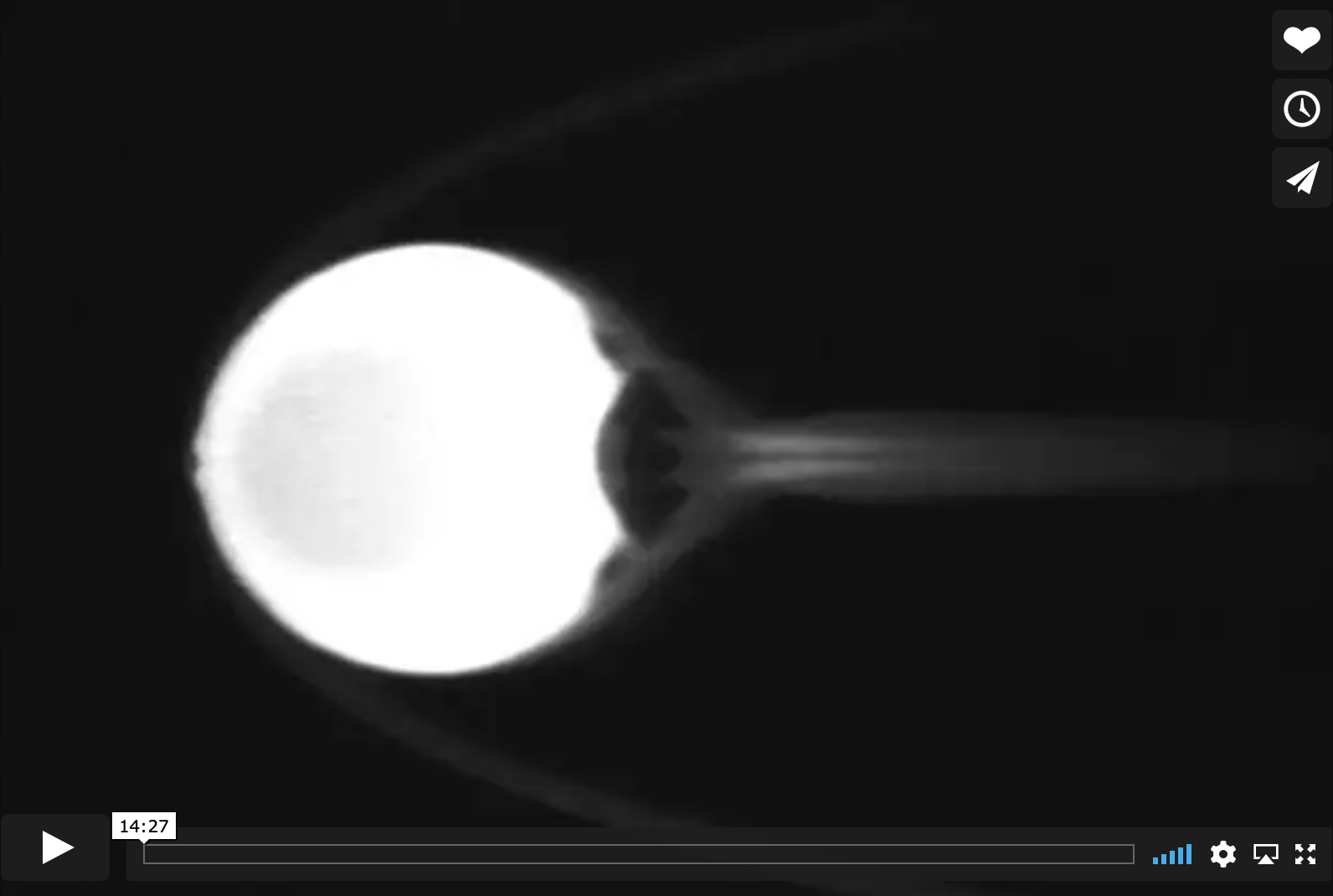
_____________
The Name is not the Thing named (2012)
‘In support of experiences that are essentially common, but to which language does not easily adhere, the video passes through places that are both themselves, and stand-ins for others. The title is taken from Aleister Crowley’s 1918 translation of the Tao Te Ching.’ — vdb
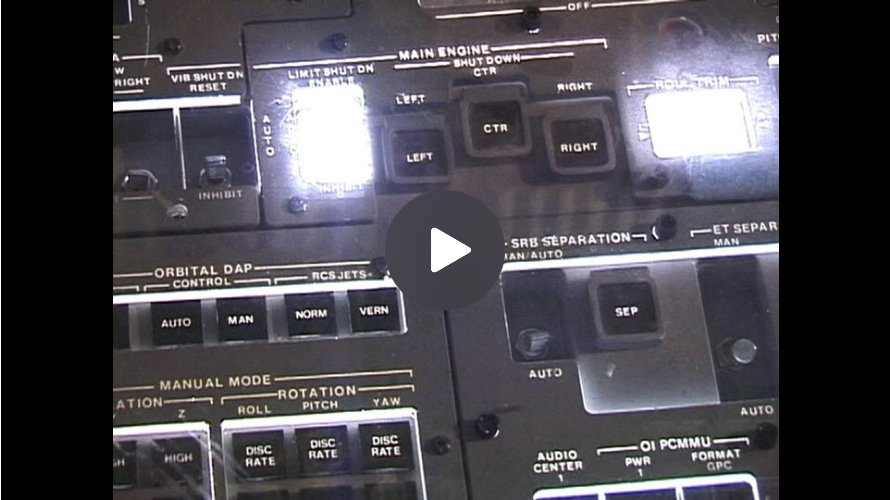
______________
Hacked Circuit (2014)
‘A single-shot, choreographed portrait of the Foley process, revealing multiple layers of fabrication and imposition. The circular camera path moves us inside and back out of a Foley stage in Burbank, CA. While portraying sound artists at work, typically invisible support mechanisms of filmmaking are exposed, as are, by extension and quotation, governmental violations of individual privacy.
‘The scene being foleyed is the final sequence from The Conversation where Gene Hackman’s character Harry Caul tears apart his room searching for a ‘bug’ that he suspects has been covertly planted. The look of Caul’s apartment as he tears it apart mirrors the visual chaos of the Foley stage. This mirroring is also evident in the dual portraits of sonic espionage expert Caul and Foley artist Gregg Barbanell, for whom professionalism is marked by an invisibility of craft. And in the doubling produced by Hackman’s second appearance as a surveillance hack, twenty-four years later in Enemy of the State.
‘These filmic quotations ground Hacked Circuit, evoking paranoia, and a sense of conviction alongside a lack of certainty about what is visible. The complication of the seen, the known, the heard and the undetectable provides thematic parallels between the stagecraft of Foley and a pervasive climate of government surveillance.’ — Ronan Doyle
Excerpt
_____________
w/ Olivia Block Second Sighted (2024)
‘Deborah Stratman’s Second Sighted showcases an unforgettable array of audio and visual material, ranging from computer-generated images to archival footage of satellites. The film transcends time as it jumps between style and tone, combining the new and the old, accomplished through the use of footage found in the Chicago Film Archives accompanied by the work of composer Olivia Block. “Obscure signs portend a looming, indecipherable slump. An oracular decoding of the landscape,” describes Stratman.’ — filmlinc
Excerpt
______________
The Illinois Parables (2016)
‘An experimental documentary comprised of regional vignettes about faith, force, technology and exodus. Eleven parables relay histories of settlement, removal, technological breakthrough, violence, messianism and resistance, all occurring somewhere in the state of Illinois. The state is a convenient structural ruse, allowing its histories to become allegories that explore how we’re shaped by conviction and ideology.
‘The film suggests links between technological and religious abstraction, placing them in conversation with governance. Locations are those where the boundaries between the rational and supernatural are tenuous. They are “thin places” where the distance between heaven and earth has collapsed, or more secularly, any place that bears a heavy past, where desire and displacement have lead us into or erased us from the land. What began as a consideration of religious freedom eventually led to sites where belief or invention triggered expulsion. The film utilizes reenactment, archival footage, observational shooting, inter-titles and voiceover to tell its stories and is an extension of previous works in which the director questioned foundational American tenants.
‘The Parables consider what might constitute a liturgical form. Not a sermon, but a form that questions what morality catalyzes, and what belief might teach us about nationhood. In our desire to explain the unknown, who or what do we end up blaming or endorsing?’ — vdb
Excerpt
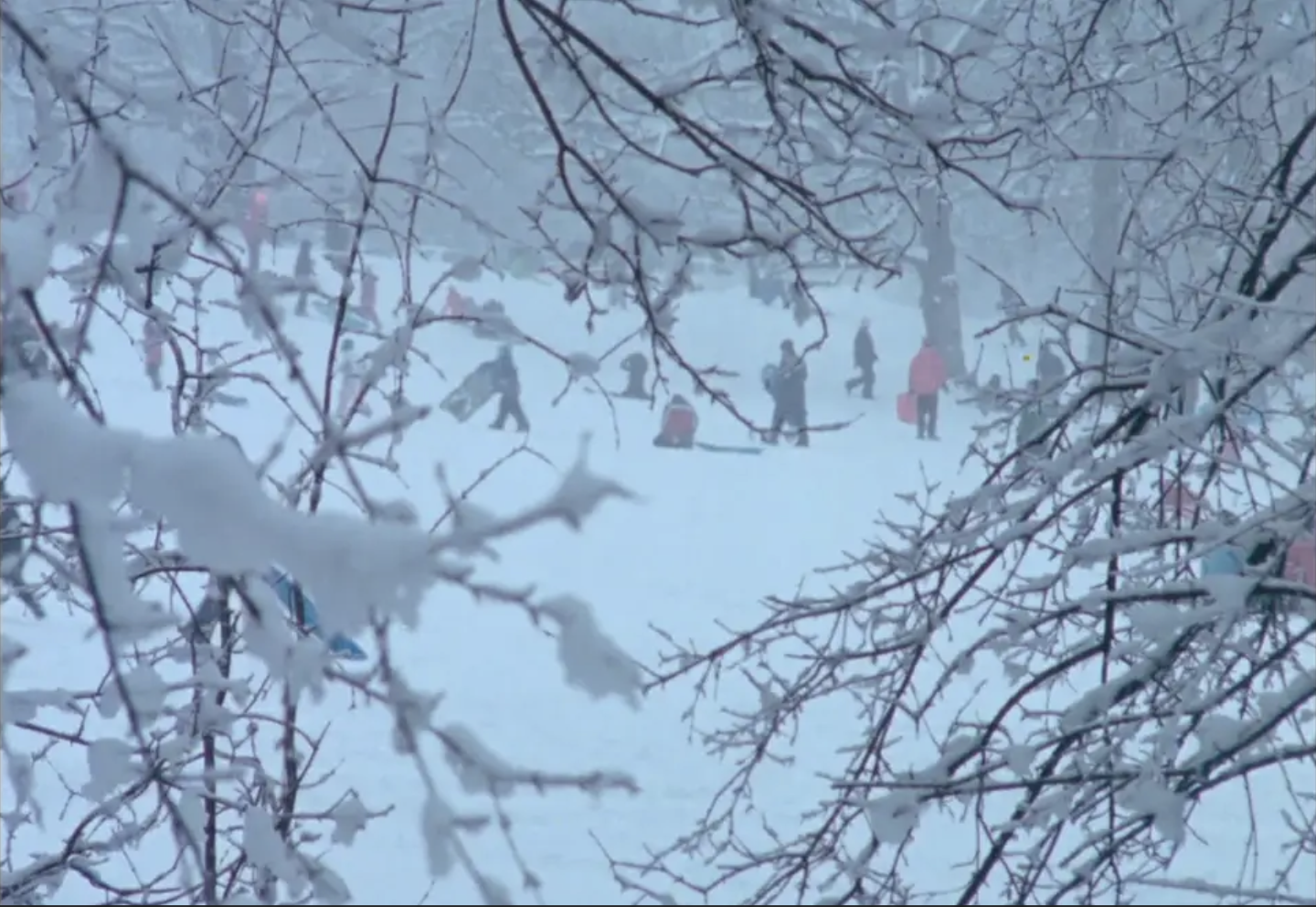
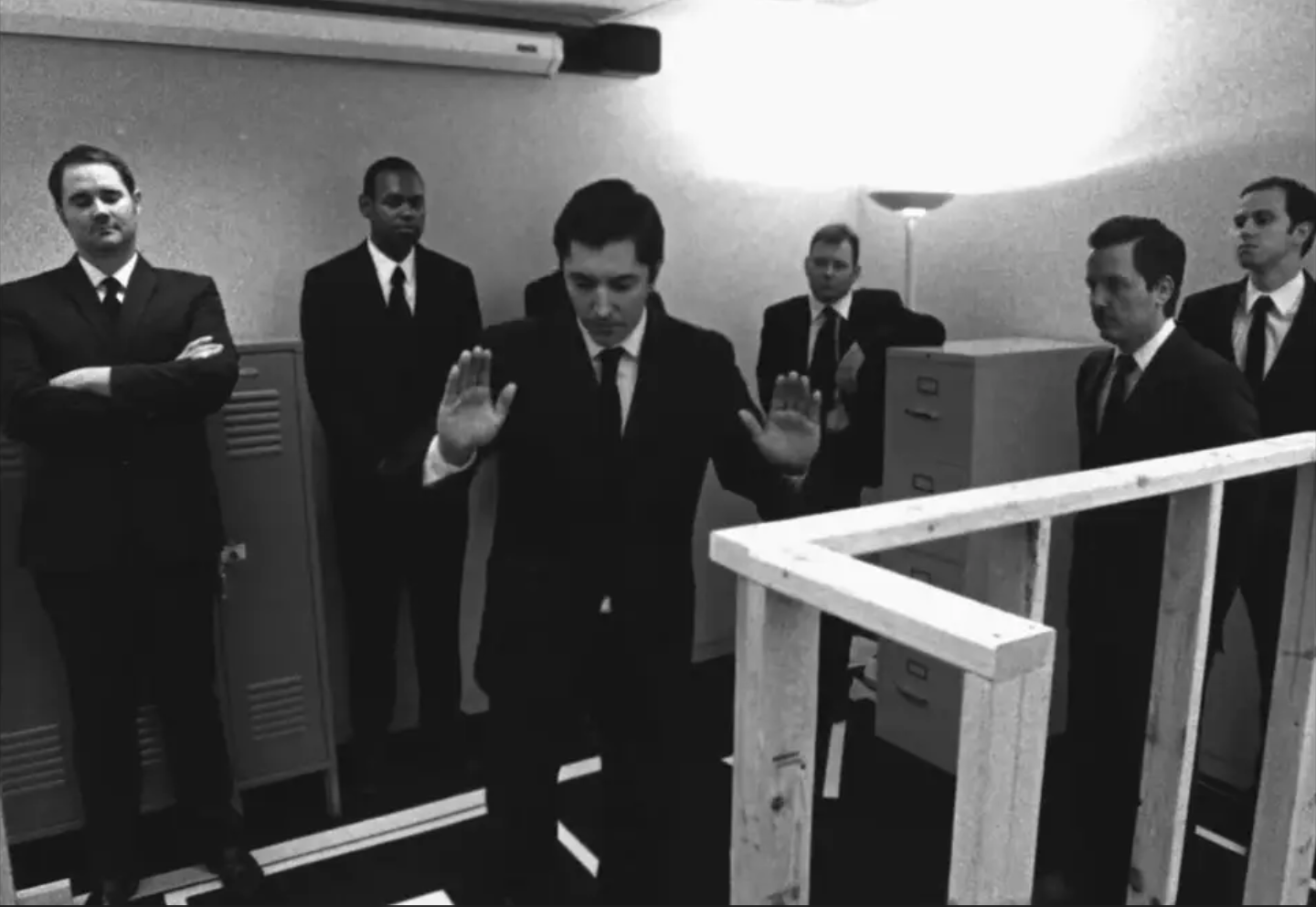
__________
Xenoi (2016)
‘The Greek island of Syros is visited by a series of unexpected guests. Immutable forms, outside of time, aloof observants to human conditions.’ — Letterboxd
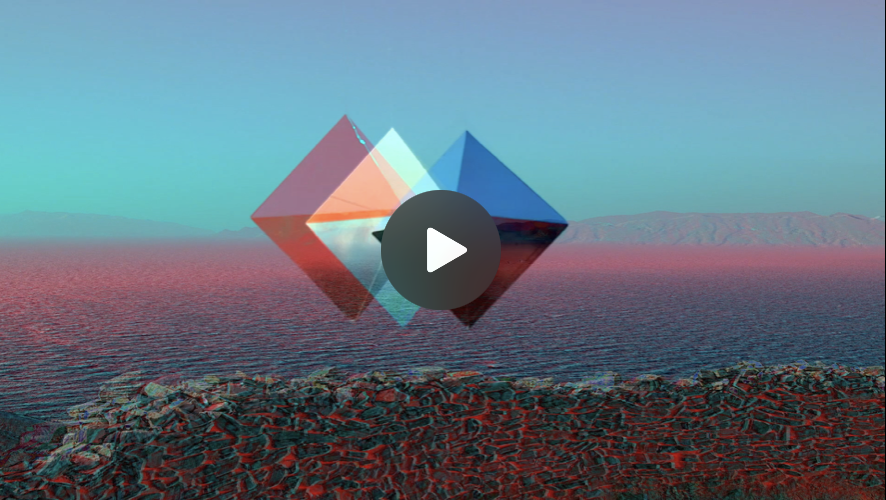
UVP Insights: Debroah Stratman on Xenoi
__________
Siege (2017)
‘The SIEGE animations riff on the way the human brain makes spatial predictions about its surroundings in order to perceive the present. For best effect, stare at the center of the image then look away.’ — DS
the entirety
___________
Vever (for Barbara) (2019)
‘A cross-generational binding of three filmmakers seeking alternative possibilities to the power structures they are inherently part of. Each woman extends her gaze like an offered hand to a subject she is outside of. Vever (for Barbara) grew out of the abandoned film projects of Maya Deren and Barbara Hammer. Shot at the furthest point of a motorcycle trip Hammer took to Guatemala in 1975, and laced through with Deren’s reflections on failure, encounter, and initiation in 1950s Haiti. A vever is a symbolic drawing used in Haitian Voodoo to invoke a Loa, or god.’ — MUBI
Excerpt
*
p.s. Hey. ** Dominik, Hi!!! I’m sure I’ve mentioned this, but when I’m watching a movie and there’s a scene when an astronaut is ‘space-walking’ or ‘repairing’ a ship’s exterior in outer space or things like that, I feel like I’m having a heart attack and a stroke at the same time. And it’s amazing how often I seem to wind up accidentally watching movies that have a scene like that. Thanks, your Love of Saturday was successful! It was really stressful ‘cos that outcome wasn’t for sure. Next is the parliamentary elections in six weeks, and hopes turn to keeping her party out and getting some Leftists in there. Love turning the streets of Paris into trampolines for 15 minutes, G. ** David Ehrenstein, Yes, unfortunately we still have Macron, but the utter nightmare was averted, and more handily than had been feared. ** TomK, Hey, Yow, sounds so dreamy. I need me a bunch of those. And no need to worry, maestro. ** Misanthrope, Hi, G. It’s still just as noisy, but the sounds of cars cover it up. So, how was the wunderkind’s performance? Macron wasn’t actually that far ahead in the polls, but the final results had him at a sufficient distance. ** Chris Kelso, Hi, Chris. So great to see you and talk with you! Thank you again! I didn’t have the wee-est problem understanding you, and anyway my disjointed LA drawl is no picnic, so thanks for hearing me. I love curating shows. I used to do it pretty regularly, and I miss it a lot. I need to focus my energies that way, but it’s hard with so many projects going on. Curating is a lot of work. But, yeah, I hope to get the chance to curate shows again. I have a bunch of ideas. Thanks! Have a spectacular week! ** Sypha, There are even more mocked up, faux 19th century Paris recreation things out there if you ever decide to write a sequel. Nice that the wedding sounds so pleasant. Star Wars music, ha ha. People love to dance, man. It’s true you don’t seem like a guy who longs to cut loose under a disco ball. Me either, duh. ** _Black__Acrylic, Good old France proved itself to be good old France yesterday, thank god, yes. ** Steve Erickson, I’ve said it before but ‘The Lighthouse’ was like a really shitty faux-Sam Shepard play that Eggers tried to smother into being more than that with the most overused AfterEffects humanly possible. Yeah, ‘a bit better’ isn’t enough incentive for me, but thanks for taking the bullet. Great about the Slant review. I’m one of those odd people who has never really liked Belle and Sebastian. They strike my ears as wispy clutter or something. No doubt I’m way off. ** Right. Today I focus on yet another really interesting filmmaker whom most of you have probably never heard of due at least partly to the conservatism and unimaginative practices of all but a very few film distribution companies and critics/venues whose job it is to alert and influence the filmgoing public. Hence, I hope you’ll take this opportunity. See you tomorrow.




 Now available in North America
Now available in North America 
Hi!!
Oh, wow, no, I don’t think we’ve ever talked about this. Do you think (or know) those scenes upset you so much because of the concept of how unimaginably high in the air they are or because of the vastness of the space itself or…? I have a less forceful but similarly terrified experience when I watch scenes of uninterrupted expanses of deep water. Scenes in which I see a ship or boat from above and there’s a whale or anything similarly huge underneath it freak me out incredibly.
Fuck, I’m so glad Macron won! I know he’s still not the best option in the world but definitely, definitely a whole lot better than Le Pen. So the trampolines are absolutely reasonable! Love making refined sugar one of the healthiest, most essential nutrients, Od.
Hi !
Below, there is a comment I posted after the “favorite films” post… I posted it in the morning so you probably didn’t see it.
Thank you for this list. I saw TOUTE UNE NUIT this week-end : wow ! It’s so good. The last Akerman I saw was D’EST, and maybe I wasn’t concentrated enough, but is seemed too long and repetitive but not in a good way…
So now I have to add TOUTE UNE NUIT to my list.
Listened last week to very two good pieces of music :
Tyler Holmes, Nightmare In Paradise, which was just what I needed this week-end, something delicate, but not cheesy at all (listened to lots of cheesy ambient things these days, for example at the GRM thing at the Maison de la Radio, and it was all quite disappointing)
This beautiful piece of music by Helena Celle :
https://www.patreon.com/posts/guitar-for-12th-65049940?utm_medium=clipboard_copy&utm_source=copy_to_clipboard&utm_campaign=postshare
+ I’m really forward to a Editions Mego post vol. 2 !! hiiii
+ Agenda : films : there’s a screening of Jacques Perconte’s Impressions, tonight, at L’Archipel. + a screening of SOMBRE next week at Les trois Luxembourg
Have a super week !
(PS. I loved the Gisèle Vienne’s film based on JERK.)
THE OLD COMMENT :
Thank you for this beautiful list.
Bas Jan Ader is so good. Not that long ago, I saw a documentary about him : it’s not bad, it’s on YT here : https://www.youtube.com/watch?v=wW9PDCMI1iA The man telling BJA’s story and his relationship with him is a bit annoying. You probably know it already.
Yesterday I thought about this : maybe I could only be a DC’s remixer, like I’d be going through the blog’s archives and doing a DC’s remix blog. Just saying this because I found the Paul Clipson post, which was really interesting. + Listened to this really good album by Brett Naucke : Seed.
My easter week-end was mostly walking in the parc de la Courneuve (Georges Valbon) which is one of my favorite places. It was strangely empty at noon on Saturday. Sometimes it looks like an old Windows XP screensaver. Certainly it’s not a jardin à la française.
Here’s a picture of it : https://conradkonrad.files.wordpress.com/2022/04/dsc_1247.jpg
And another one : https://conradkonrad.files.wordpress.com/2022/04/dsc_1124.jpg
Read this book you recommended here : Janice Galloway’s The Trick Is To Keep Breathing [Penser à respirer], which is excellent. The first twenty pages where quite difficult, but then you understand what she wants to do, and it’s so nicely done.
Well, here’s my little list – which might be considered as just a remix of your list…
Chantal Akerman, Je, tu, il, elle
Robert Breer, A man and his dog out for air
Philippe Grandrieux, Un lac
Ingmar Bergman, Fanny and Alexander
Rainer Werner Fassbinder, In a year of thirteen moons
Apichatpong Weerasethakul, Cemetery of Splendour
Sharon Lockhart, Exit
Agnès Varda, Les glaneurs et la glaneuse
Harun Farocki, Sauerbruch Hutton Architects
Werner Herzog, Nobody wants to play with me
James Benning, The United States of America
Coen Brothers, Fargo
Lila Monin, Torsade
Abbas Kiarostami, Where is the friend’s house ?
I loved The United States of America. The woman who did the little introduction before the film told us : wail until the end of the film, there is big surprise… and maybe if you don’t wait until the end you won’t understand the film : which was a really stupid thing to say.
Stratman’swork is beautiful
Macron is a sub-parpolitician. LePen is a nightmare from which France would never awake.
Dennis, I’ve been coming here for 16 years and there’s still something new to me all the time. Amazing, no? Or, actually, considering it’s me…hahaha.
Charlie was great. Of course, it’s a middle school show and most of the kids up there, well, it was obviously their first time on stage (even after all the practice and this being their fifth and last show). He stood out even more. 1. He’s really talented and took to the stage like a duck to water years ago, and 2. he has so much more experience than the other kids. But it was fun.
You know, when it comes Art, I can be kind of a dick, so I have to rein that in a little bit, especially when it’s a bunch of 13 year olds, hahaha. I’m just so critical when I view/read/listen to things.
Speaking of which, I’ve agreed to go see The Northman with another friend this weekend. I can’t wait to rip that shit apart, hahaha.
Kayla is always asking my mom and me, “Why do you guys watch anything? All you do is rip it apart.” Granted, Kayla does that too.
Yeah, last I’d seen right before the election, Macron was up double digits in some polls. Frankly, I think he’s lucky that LePen is such a bad campaigner. She obviously has a way of focusing on things nobody cares about at all.
But hey, it’s over and now a sigh of relief and onward and upward.
Hi Dennis,
Great post. Took me a few days to get back to you. Working in a museum has been surprisingly exciting. I was worried it would affect my relation to art in a negative way but I’ve actually really enjoyed experiencing the inner workings of such an institute. It has made my approach to art both more lighthearted and in depth at the same time. A more balanced take all in all. I work at a place called Voorlinden, we are currently gearing up for a big Antony Gormley exhibition next month.
Deborah Stratman is a name unlikely to feature at the cinema near my new flat, but I’ve really enjoyed viewing her work today. Siege would defo make for some great rave visuals.
Speaking of the new flat, today I’ve been filling out a bunch of forms relating to the purchase of said property. Really has been such a drag, sheesh. Just another part of being a responsible adult that I just don’t feel up to doing.